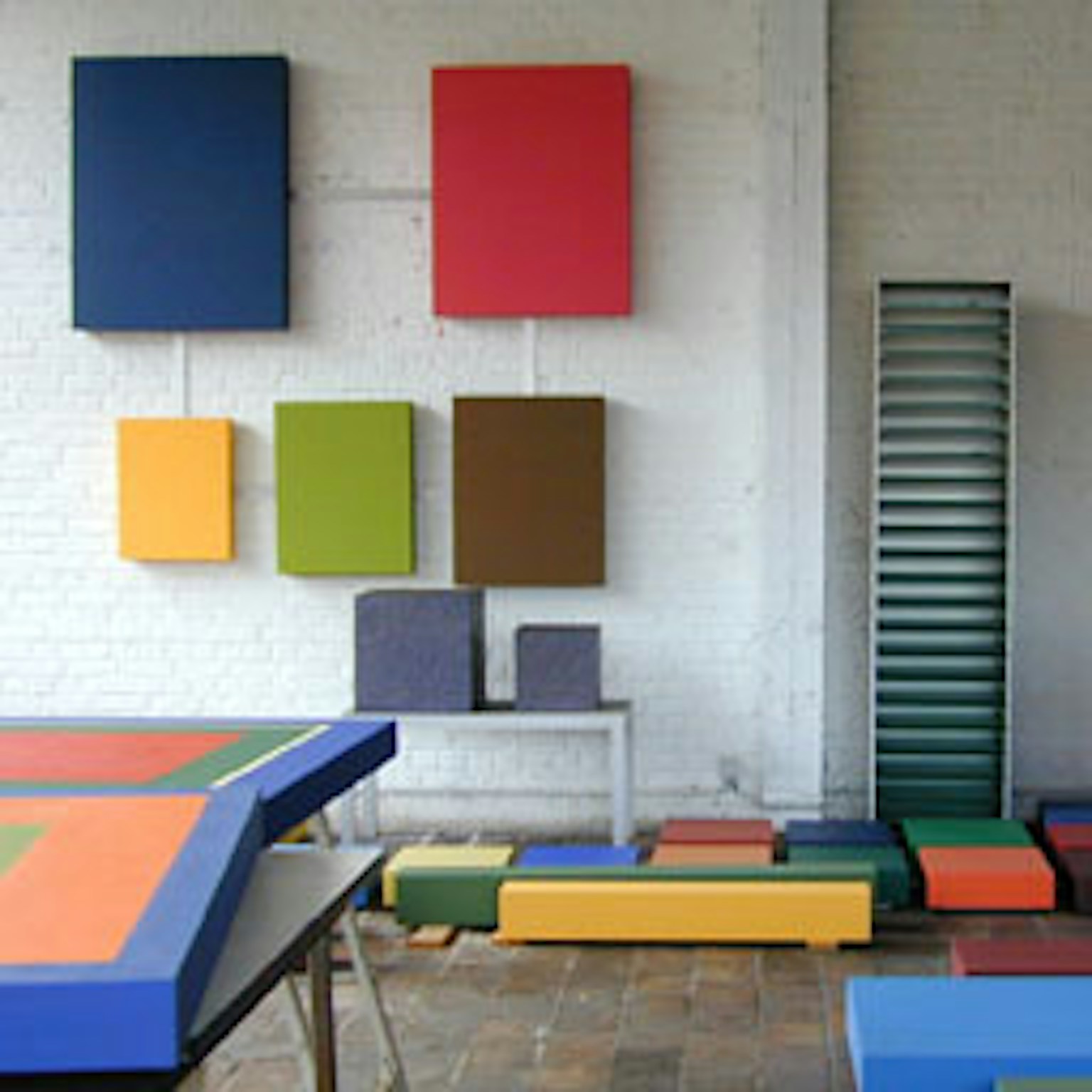Although the sources of inspiration, methods, forms and subjects in the work of the Ghent artist Willem Cole seem at first sight quite simple, one cannot nevertheless consider and categorise it unambiguously.
Cole does portraits of friends and relatives on the basis of a mixture of science and painting. The works are not pure painting, but nor can they be defined as sculpture or installations. He mixes genres and media while aiming for the purest and most highly refined result. He calculates the specific gravity of people he knows and uses it as a volume. He then makes these volumes out of a particular material and exhibits them in this form. Cole’s work is refined and its aesthetic power lies in the tautness of the form, in the universality of the abstraction. However, Cole’s formal idiom does not appear from nowhere. He started as a pupil - and later assistant - of Dan van Severen. The visual language of the older painter is a subtle presence in the background of Cole’s work. In his first works, done while still a student, the subject was ‘space’. He looked round the room and painted the complete space on the two-dimensional canvas. He soon ended up with a completely black plane. Although the principle by which one arrives at abstraction seems very simple, there is here a quite complex analysis of ‘the gaze’ and ‘seeing’. He wants to distance himself as much as possible from virtuoso painting in order to emphasise the individuality of the medium, a two-dimensional reality, without lapsing into a naive, childish or expressionist style. To do this he draws both on the tradition of geometric abstraction and the sciences. By studying the gaze he came to several simple conclusions that still determine his work today. One of the first facts that Cole found was that the eye’s angle of view is 200 degrees. The fascinating thing about this is that it is not just a matter of what can literally be seen, but also that the boundary is removed between empirical perception and the twilight zone included in the same angle. The eye is responsible for the ‘feeling’ you can have that someone is behind you, without direct observation of their form. Cole’s early work made particular use of this. In rigid, geometrical forms, Cole examines, describes and also questions the way the world is perceived. A constant element of this period is the broken line, at an angle of 200 degrees. Whereas in his first works the human figure, which is after all always the main subject of his art, is mainly seen in an evocative sense in the accentuation of ‘the gaze’, his work gradually evolved towards an examination of the entire human figure. Starting from the gaze and from perception, he became increasingly attracted to the way people occupy and define space. This evolution runs parallel to his discovery of the painting of Piero della Francesca. The Madonna del Parto is a particular inspiration to him. Della Francesca was able in a purely scientific way to achieve a perfect balance between emotion, colour, form and spatiality.
From that moment on, Cole turned almost entirely to human portraits. Whereas in his earlier work the form was dominant, starting from the series called Je vous donne des couleurs colour played an increasingly important part. An interesting aspect of this recent work is the interplay between science and intuition. The volumes are scientifically determined on the basis of body weight. The shape of the volume is mathematically composed and the colour is purely intuitive. Despite the far-reaching abstraction and outward coolness, the anthropomorphic element remains very much palpable in his work. In addition, the forms are far from static and contain a subtle play of poetry and references. For instance, in a portrait of his pregnant wife he refers to the colour of the Madonna del Parto, while from the front the form is a perfect volume and in profile is slightly curved. Other works are the ‘growing portraits’ he has made of his children. He measures the volume at a particular moment and represents this in a transparent perspex sheet in which the name of the child and the date are engraved. This is repeated every two years, with the most recent sheet being mounted on top of the previous one. The name and date are always engraved in the same position so that in the course of time the name remains legible but the dates become an abstract and - literally - stratified tangle of marks. In this way Cole creates a play of language and image, abstraction and anecdote. By negating virtuosity and making abstract monochrome volumes, Cole is constantly flirting with the boundary between art and design. However, the person-based element that is expressed both in his resolute choice of portraits and in the fact that he only depicts people from his immediate environment, friends and family, means that his work transcends this and that it has a unique poetry and visual force.

